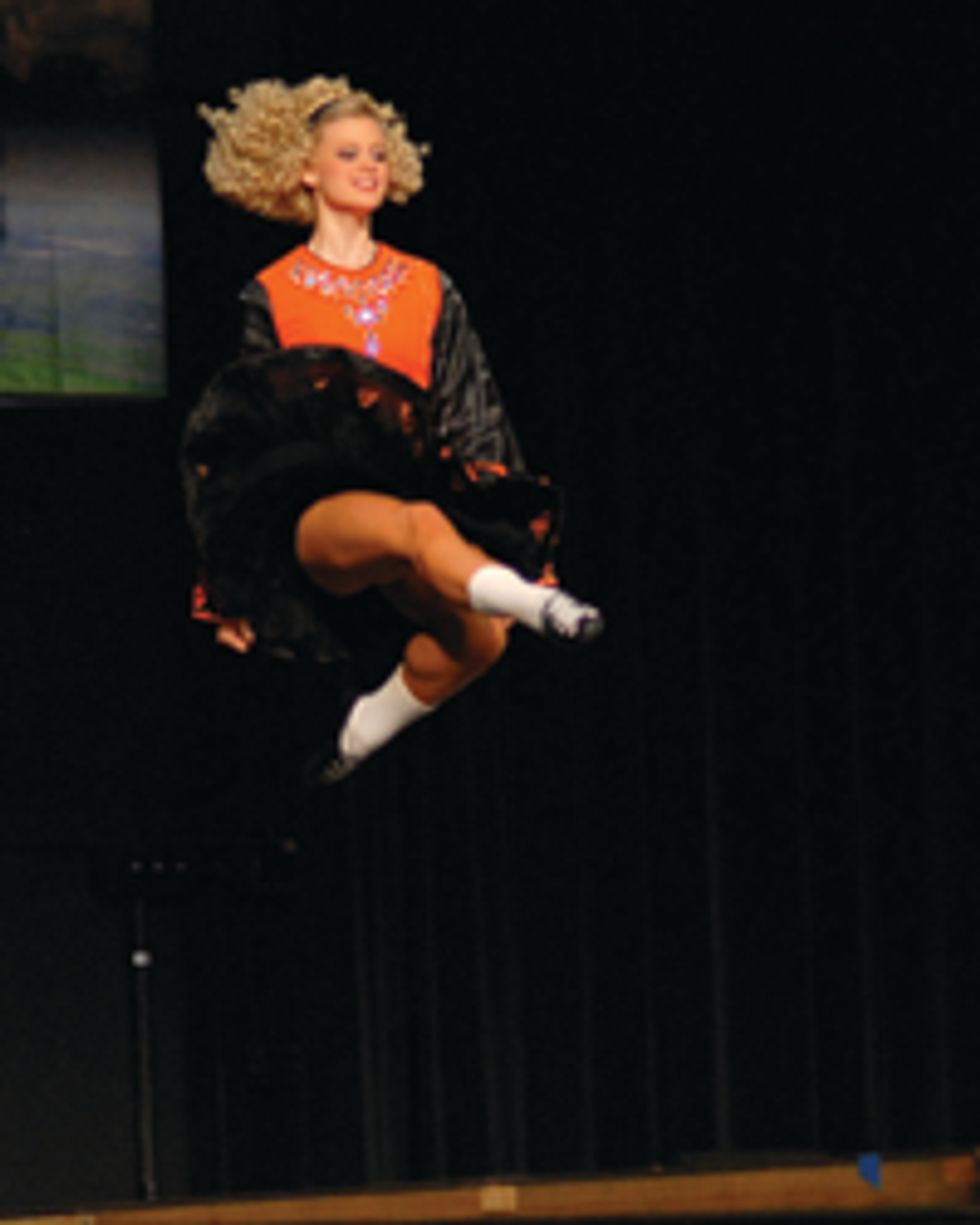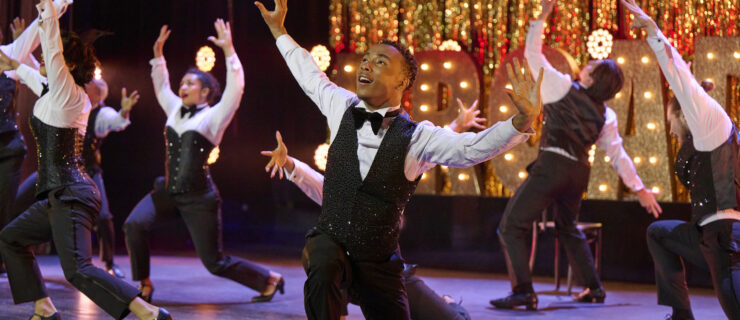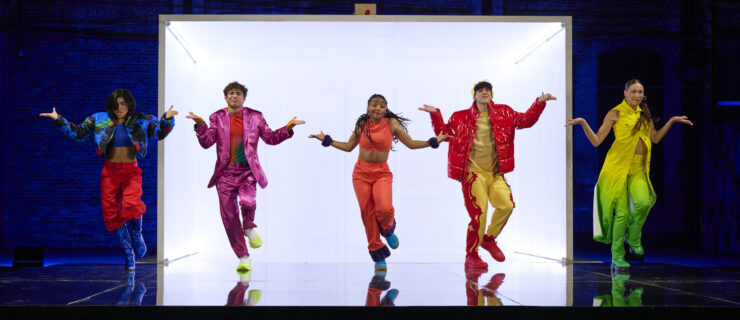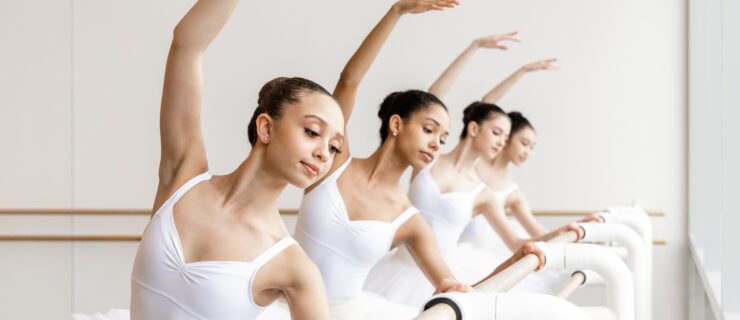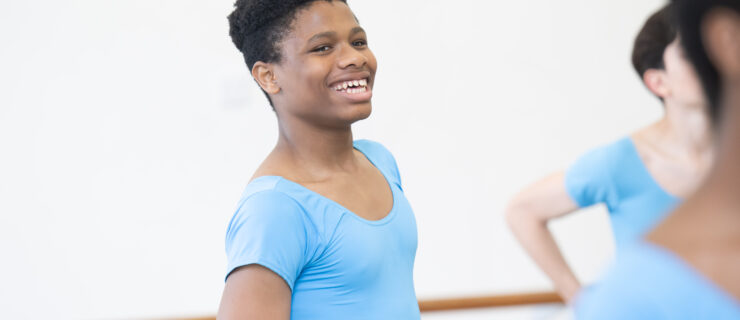Celtic Competition
When 21-year-old Margaret Darlington, a member of the Claddagh Dance Company, in Ventura, CA, takes the stage this April at the World Irish Dancing Championships in Dublin, Ireland, she’ll be performing to win. Dressed in an orange and black velvet dress decorated with a Celtic-inspired design, she’ll explode into motion with high kicks, hops and precise footwork upon hearing the sounds of the fiddle, accordion and Bodhran drum. This will be Margaret’s 11th time competing at this event—she took first place in her age group in 2007 and came in second last year.
Irish step-dancing as we know it has existed since the 1700s. Back then, families in Ireland would pass down folk dances from generation to generation as a way of preserving their culture. In the past century, however, Irish dance has developed an ultra-competitive aspect. In 2011, there are thousands of dancers like Margaret who hope to be named the best Irish dancer in the world—but it’s a long road to the championships. Here, DS takes you inside the world of competitive Irish dancing and shows you how dedicated dancers like Margaret make it to the top.
Training
Irish step-dancers start training as early as age 3. They begin by working on the genre’s rigid posture and learning steps for standard Irish dance styles such as the reel, the light jig, the slip jig, the heavy jig and the hornpipe.
There is no codified vocabulary for Irish dance. Though words like “plié” and “tendu” are universally recognizable to ballet dancers, Irish dance schools come up with their own phrases to describe the moves. What might be called a “treble” at one school could be called a “shuffle” at another.
Though recreational Irish-step dancers may only take class for one or two hours a couple of times each week, competitive Irish dancers often take more classes and practice on their own. Maggie Doyle, a 17-year-old dancer with Trinity Academy of Irish dance in Chicago, IL, won fourth place at Worlds in 2010. She generally takes five hours of classes a week, and in the weeks leading up to competition she adds two extra classes to her schedule and practices at home daily.
Some teachers also encourage their competitive students to cross-train by taking classes in other dance forms. For example, at Griffith Academy, in Wethersfield, CT (a school that has trained many world champions and even some of the pros in Riverdance), competitive dancers are required to take ballet classes. “Ballet helps Irish dancers with their flexibility and centering,” says Mary Beth Griffith, a teacher at the academy. Irish dancers keep their arms at their sides while they dance, so a strong core is especially crucial for balance, Griffith says.
Going for Gold
Irish dance students begin their competitive careers by entering a local Irish dance competition called a “feis” (pronounced FESH)—a Gaelic word for an arts and culture festival. These competitions are like big fairs with music, food and goods for sale. Competitors perform simultaneously on several makeshift stages throughout the feis.
Dancers are divided by age and skill level and over the course of a competition, they perform in each of the five Irish styles, either dancing in groups or as soloists. Students must compete for at least a year in their age category and must be awarded first place in each type of dance to advance to the next level.
Live music accompanies the feis performances. Each dance is performed to a different type of music. Trained Irish dancers recognize the appropriate beat for each style in the same way ballroom dancers know whether they should do a tango or a Viennese waltz based on the music that’s playing. Irish dancers prepare choreography for each style. When they step onstage, they know which style they’ll be dancing, but they don’t know which song they’ll be dancing to until the musicians start to play.
Making It to the Top
It takes years to rise through the competitive Irish dancing ranks. To qualify for the World Irish Dancing Championships—the event all serious competitive dancers hope to win—dancers must have received first-place medals in five levels of competition at feiseanna (the plural of feis).
At the World Championships, the atmosphere is much more intense than at a local feis: Everyone spends most of their time indoors performing, waiting for their scores or cheering on their friends. “You can feel the excitement the moment you enter the doors. The competitors are there to win or achieve their personal best, so there’s a lot of emotion and tense moments,” says Deidre Gillette, another Trinity Academy dancer and an eight-year Worlds’ veteran. “There are thousands of competitors at Worlds, and you’re dancing for a huge audience and being judged at the same time. It’s not for those with weak nerves, that’s for sure!”
Beyond the Pinnacle
So what’s an Irish dancer to do after snagging first place at the World Championships? Some continue on the competition circuit to defend their titles, though most stop competing before they turn 30. Others turn to teaching, and a lucky few go pro by joining an Irish dance show like Lord of the Dance, Riverdance or Rhythm of Dance.
As a rite of passage, each championship dancer wears a unique, hand-made dress. Caitlin Golding, a dancer with Broesler School of Irish Dance in Maryland, had her championship dress custom-made in Belfast, Northern Ireland.
Did You Know?
There are competing theories about why Irish step-dancers keep their arms at their sides. Some believe the posture came into use during the 18th and 19th centuries when dancing was banned by the Church. The theory is that people would meet in the fields to dance but would keep their arms down so that passersby couldn’t see that they were dancing. Others believe that the arms were a necessity for dancing in small crowded rooms and that the look just stuck!
Want to attend a feis? Visit
northamericanfeiscommission.org to find one near you.
